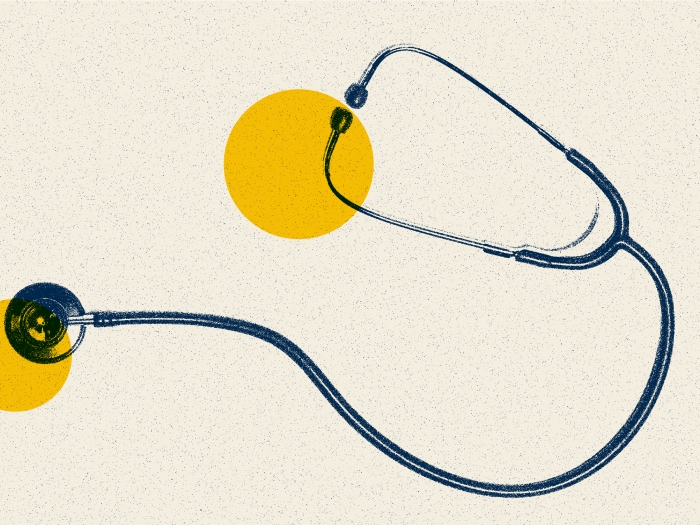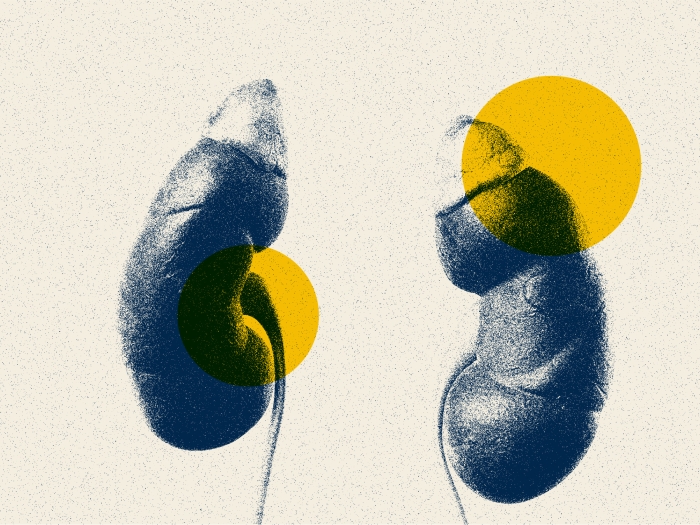The technique could help researchers find drugs that improve health and lengthen life.
11:12 AM
Author |

For many, getting older can unfortunately mean an increased risk of illness from cardiovascular disease to cancer. University of Michigan scientists are actively researching the biological underpinnings of aging with the aim of developing interventions that could potentially help people live longer, healthier lives.
A new paper in the journal Science Advances describes the discovery of several promising small molecules that appear to reduce cellular stress in mouse skin cells and could lengthen life.
"Cellular stress resistance appears to be a common feature of long-lived organisms, such as invertebrates and mice," says the paper's lead author David Lombard, M.D., Ph.D., associate professor of pathology. Lombard is part of a multidisciplinary group at U-M's Paul F. Glenn Center for Aging. Recent research from colleague and fellow study author Richard Miller, M.D., Ph.D., found several promising drugs, including rapamycin, a cancer drug, and acarbose, a diabetes drug, that extended life in mice.
The new study, which uses high throughput screening, a technique that allows for the examination of hundreds of compounds at once, gets around some of the limitations posed by mouse studies.
"Mice live on average three years, which makes using them for longevity studies time-consuming and expensive," Lombard explains. By using cells to examine how a cell responds to stress, they hope to develop a proxy system with which to look at aging.
For the study, mouse skin cells were exposed to three types of environmental stress: a toxic herbicide called paraquat, the heavy metal cadmium and methyl methansulfonate, which damages DNA. After treatment with more than 4500 compounds, the team identified hundreds of small molecules that conferred some degree of protection against one or more of the stressors. The team then focused on eight compounds for a closer examination of how they worked at the molecular level.
Lombard explains that two candidates, AEG 3482 and cardamonin (found in spices such as cardamom), appeared to activate the Nrf2/SKN-1 pathway. Previous research has shown that this pathway helps cells resist stress and is implicated in the life-lengthening effects of several other interventions in C. elegans, a worm frequently used for aging studies, and can even extend the lifespan of male mice.
MORE FROM THE LAB: Subscribe to our weekly newsletter
Comparing their findings to a different study of longevity in C. elegans, they found some of the same compounds that protected worms from stress were of the same class as those that their team identified as effective in mouse cells.
The team notes that their method has limitations. For example, they found that rapamycin and acarbose, previously shown to extend life in mice, did not protect against the stressors they used. And, says Lombard, a lot more work needs to occur before the findings can be extrapolated to humans. "I think the bottom line is we're fairly different than worms and flies, and some of these drugs have similar effects in different organisms, but it's not a one to one relationship."
Lombard says the promise of the method is its ability to find interesting drugs for follow up, especially to study their mechanism of action. "I don't think any are ready for lifespan studies, but what we've identified is an interesting group of compounds that have some intriguing effects in cells and in invertebrates."
Paper cited: "High-throughput small-molecule screening reveals Nrf2-dependent and -independent pathways of cellular stress resistance," Science Advances. DOI: 10.1126/sciadv.aaz7628

Explore a variety of healthcare news & stories by visiting the Health Lab home page for more articles.

Department of Communication at Michigan Medicine
Want top health & research news weekly? Sign up for Health Lab’s newsletters today!





